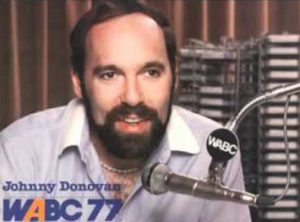NorthEast Radio Watch 12/23 & 12/30/2024: WKIT Lives!
In this week’s issue… WKIT finds a buyer - Eskin out at WIP - Staff shifts in Utica - CRTC approves Bell divestitures
In this week’s issue… Perry buys in Mass. – TV news cancelled in Canada – WTC tests on the air –
CT translator seeks new home – Rumba rumbles into central PA
By SCOTT FYBUSH
A programming note: we’ll be doing some family traveling in the next few weeks, so NERW may appear on Tuesdays instead of Mondays from time to time, as it’s doing today. Sign up for our free mailing list to get immediate notification when a new article is published – and don’t forget to follow us on Facebook and Twitter (and our content partner, RadioInsight, too) for frequent news updates!
*When t

Perry eventually sold the Brockton AM to his manager there – it later became WMSX and is now WZBR, licensed to Dedham and transmitting from Hyde Park – but now he’s coming back to the City of Champions with a $165,000 deal to buy Brockton’s remaining AM voice from Jhonson Napoleon’s Azure Media. That’s the 5000-watt day/1000-watt night signal on 1460 that spent many decades as WBET, itself an important community voice for Brockton and vicinity. For the last few years, it’s been known as WXBR, and under Napoleon it turned its focus to the Haitian community in the region last year.
Under Ed Perry, 1460 will turn its attention back to English-language audiences as it begins a new life as the latest WATD(AM). Perry says his plan is to install a news-talk format on the AM, heavy on local content – and if Brockton’s going to get that local content, Perry’s probably the only one who can do it these days, thanks to the economy of scale he’ll enjoy by being able to use his FM staff and revenues to help support the AM. (If that sale price seems exceedingly low – BusinessTalkRadio paid $1 million to Aritaur for the station, then WBET, in 2006, and Azure paid $250,000 as recently as 2012 – consider that Perry will have to find a new transmitter site for the station and may well have to reduce its power somewhat.)
It’s calendar time!
The 2016 edition is due to come back from the printer in just a few days, and it’s ready for you to order!
But until the printer actually hands it over, we’re offering both the regular and limited editions at a discount price, and one lucky winner might get a calendar for free.
Go to the bottom of the column for details.
Please contact Lisa with any questions.
A veteran New England broadcaster has died:
[private]
Lou Dumont went straight into radio after graduating from Haverhill High School in 1942, working first at WHEB (750 Portsmouth NH), then at WCOP (1150) in Boston, WBEC (1420 Pittsfield), WKNB (840 New Britain CT), WIDE (1400 Biddeford ME) and WMUR-TV (Channel 9)/WGIR (610) in Manchester when the TV station went on the air in 1954. Dumont returned to Boston in the early 1960s to work in the WBZ-TV (Channel 4) newsroom, then at WHDH-TV (Channel 5) and WNAC-TV (Channel 7) as a writer, producer and assignment editor. Dumont returned to New Hampshire in 1970 to work in cable and closed-circuit TV; more recently, he’d been on the air at WFCC (107.5) on Cape Cod and doing a standards show on WKNE and later WKBK (1290) in Keene, New Hampshire. Dumont died May 7 in Hyannis, at age 90.
A venerable callsign is back home in Attleboro: the local cable access channel that’s getting WRNP (1320) donated to it has returned the station to its original callsign, WARA, which it used from 1950 until 1998.
*In NEW HAMPSHIRE, AJ Dukette is out after a long career at what eventually became the Binnie Media stations. Dukette started at WJYY (105.5 Concord) as a part-timer in 2000, becoming music director in 2001 and PD in 2003, eventually becoming operations manager/PD for the cluster. He’s continuing his VO business while looking for a new gig.
And we note the death of Bill McDermod, who was the overnight DJ for many years at WHEB-FM (100.3) in Portsmouth, and later worked at WSHK (102.1) on the Seacoast. McDermod died May 8 at 65.


*Our NEW YORK news begins with the retirement of one of radio’s unsung heroes. Johnny Donovan has quietly departed WABC (770), ending a 43-year career with the station where he was the last remaining daily link to the old “Musicradio 77” days. Donovan started his radio career in the Hudson Valley, where he helped build WHVW (950 Hyde Park), went on the air there as a DJ, then continued on at the now-defunct WBAZ (1550 Kingston), WENE (1430) in Binghamton and WMID (1340 Atlantic City) before coming to New York City as a jock on WOR-FM (98.7).


*For the first time since 2001, there’s actual RF on the air from the World Trade Center: we’ve seen several reports in the last few days of viewers seeing the overnight UHF test transmissions on RF channel 32 from ion’s WPXN-TV (Channel 31). That UHF signal, as well as a VHF signal on channel 12 under the license of WABC-TV (Channel 7), are part of a test coordinated by the Metropolitan TV Alliance to analyze how well DTV will perform in the real world from the 1776-foot spire atop the new 1 World Trade Center; those results (and a host of business concerns, including the rents at the Empire State Building) will determine whether any broadcasters decide to make WTC their new permanent home.
*ESPN Radio is bringing its signature morning show from Bristol, Connecticut to the big city: it’s just announced that “Mike and Mike in the Morning” will move to a new facility in ABC’s Times Square Studios beginning on February 8, 2016, the morning after the Super Bowl. Molly Qerim is reportedly moving from NFL Network to become the regular third voice on the show, which is also seen on ESPN2 on TV.
Where’s Chunky? The veteran of New York’s WNOW-FM (92.3, now WBMP) and most recently Philadelphia’s WRDW-FM (96.5, now WZMP) has landed at Alpha Media in Portland, Oregon, where he’s going country as the new morning man at KUPL (98.7) – which just goes to prove, once again, that a really good talent can work in any format.
Out on Long Island, Juan Ayala has again modified his application for modifying his translator permit. W233BX in Flanders is now seeking 75 watts instead of 200 watts on 93.9, and it now proposes relaying EMF’s K-Love outlet, WKLV-FM (96.7 New Rochelle), instead of WXKS-FM from Boston.
*The extensive “Northeast Public Radio” network based at Albany’s WAMC-FM (90.3) has yet another new link in its chain: in northern Westchester County, W240CR (95.9 Peekskill) has filed for a license to cover for its 10-watt signal from the tower of Pamal’s WHUD (100.7 Peekskill). The new 95.9 signal is fed over the air from WAMC relay WOSR (91.7 Middletown).
Upstate, our speculation last week proved to be correct: as of Monday, Entercom is using newly-purchased translator W284AP (104.7) to simulcast “Alternative Buffalo” from rimshot WLKK (107.7 Wethersfield Township) into the parts of the city of Buffalo and neighboring Amherst where the format should perform best.
We’ve lost two engineers in the central New York broadcast community in quick succession. Tim Perry, K8DSO, was the longtime chief at the Regent/Townsquare cluster in Utica and had just moved to Watertown in March to become chief engineer at Community Broadcasters’ cluster there. Before coming to Utica in 2000, Perry had engineered in Nevada, southern California and at Jacor in Toledo and Cleveland. And then, just a few days later, came news of the passing on May 5 of Kenny Rhuland, who had long been with WCDO/WCDO-FM in Sidney and several other stations in the region. Rhuland and Perry often backed each other up when it came to serving clients in the region, so the loss of both at once is especially devastating.
*In NEW JERSEY, the vacuum left behind by the end of local news (and the NBC affiliation) at WMGM-TV (Channel 40) in Atlantic City has been getting filled by radio: former sister station WOND (1400 Pleasantville), which had used the NBC40 newsroom for much of its local content, ended up bringing several former TV staffers on board and expanding its local news hours. And now another former WMGM-TV face, anchor Michelle Dawn Mooney, is bringing some local flavor to Townsquare’s WPGG (1450 Atlantic City). She started last week as the 1-3 PM host on “WPG Talk Radio,” which has otherwise been largely syndication-fed after longtime local morning host Harry Hurley signs off.


*In the Scranton/Wilkes-Barre market, Family Life Ministries is applying to move its WCIG (107.7 Dallas) from its present 2.35 kW/536′ DA facility off Bunker Hill Road north of Wilkes-Barre over to Lookout Mountain just to the northeast, where it would run 2.45 kW/518′ DA.
*Several Keystone State obituaries this week: Charlie Weston (Whetzel) died May 1 of skin cancer in Altoona. Weston spent many years at WRTA (1240) and had more recently been co-hosting mornings at crosstown competitor WFBG (1290). He was 65.
Kelley Mitchell died on Saturday in Florida at 58; before moving to Miami to become a well-known newscaster at WPLG (Channel 10) and WSVN (Channel 7), she was an anchor in Pittsburgh at WPXI (Channel 11), where PBRTV.com recalls that she anchored the 5 PM newscast in the late 1980s and early 1990s.
*In last week’s CANADA installment on NERW, we speculated that the CRTC might take a look at York University’s CHRY (105.5 North York) amid concerns that its abrupt format shift may conflict with the terms of its campus/community license. This week, the focus turns to TV with the news that Rogers is cutting 110 jobs and cancelling the long-running multilingual newscasts on its OMNI outlets, including Toronto’s CFMT (Channel 47/OMNI 1) and CJMT (Channel 44/OMNI 2).


What will remain will be local public-affairs shows that will focus more on talk and less on field reporting and attempting to cover breaking news. Rogers says the changes are driven by the growing expense of the OMNI operation, which cost C$9 million to operate but brought in less than $4 million in revenue last year. Overall, Rogers tells the CRTC it’s losing more than $80 million a year on its broadcast TV services. But by cancelling these long-running multilingual newscasts, Rogers is also provoking political leaders. Right now, it appears the Punjabi community in British Columbia is especially vocal about the changes. In the midst of an overall rethinking of the Canadian TV landscape, will the CRTC let OMNI cancel these newscasts for good?
*Northwest of Toronto, the CRTC has approved another addition to the crowded landscape at 102.7 on the dial. Vista’s CJFB (105.5 Bolton) has been granted permission to move to 102.7, jumping from 50 watts to 1.56 kW average/4 kW max DA/-22 m. Vista will turn off CFGM (102.7 Caledon), which had been rebroadcasting CJFB.
Radio People on the Move: Jesse Reynolds starts in June as the new morning co-host alongside Tony Stark at CKQB (Jump! 106.9) in Ottawa. Reynolds beat out a slew of other contestants in the “Greatest Gig on Earth” contest.
In Montreal, Tom Armour has retired from CJAD (800) after a news career that’s been going non-stop since 1959. That’s when he started at CJQC (1340 Quebec City), later working at CJSS (1220 Cornwall) before coming to Montreal’s CFCF (600)/CFCF-TV (Channel 12) in 1962. Armour jumped to CJAD in 1965, returned to CFCF and CFQR (92.5) in 1977, and came back to CJAD for good in 1993. In 2005, Armour moved to weekend-only duty.
Longtime radio owner Gordon Burnett has died. Burnett started his radio career at Toronto’s CKFH (1430) after World War II service, then went to the Caribbean to build “Radio Guardian” in Trinidad in 1955. Burnett put CHOW (1470 Welland) on the air in 1957. The station, now CIXL (91.7), stayed in Burnett family hands (via his wife Suzanne Rochon-Barnett) until 2004. Burnett was just shy of his 85th birthday.
And we close with sad news from Ottawa: CFRA (580) news anchor Lauren Davis died Monday at age 24. Davis was the daughter of longtime CHFI (98.1 Toronto) morning host Erin Davis, who headed home from a planned remote broadcast in Jamaica that was cancelled after the news was announced. Davis had been on maternity leave from CFRA, where her husband, Phil Shirakawa, is a producer; they had a baby boy last year.
[/private]

Behold, the 2025 calendar!
We chose the 100,000-watt transmitter of the Voice Of America in Marathon, right in the heart of the Florida Keys. This picture has everything we like in our covers — blue skies, greenery, water, and of course, towers! The history behind this site is a draw, too.
Other months feature some of our favorite images from years past, including some Canadian stations and several stations celebrating their centennials (can you guess? you don’t have to if you buy the calendar!).
We will ship daily through Christmas Eve. Place your order now for immediate shipping!
This will be the 24th edition of the world-famous Tower Site Calendar, and your support will determine whether it will be the final edition.
It’s been a complicated few years here, and as we finish up production of the new edition, we’re considering the future of this staple of radio walls everywhere as we evaluate our workload going forward.
The proceeds from the calendar help sustain the reporting that we do on the broadcast industry here at Fybush Media, so your purchases matter a lot to us here – and if that matters to you, now’s the time to show that support with an order of the new Tower Site Calendar. (And we have the new Broadcast Historian’s Calendar for 2025 ready to ship, too. Why not order both?)
Visit the Fybush Media Store and place your order now for the next calendar, get a great discount on previous calendars, and check out our selection of books and videos, too!
From the NERW ArchivesYup, we’ve been doing this a long time now, and so we’re digging back into the vaults for a look at what NERW was covering one, five, ten, fifteen and – where available – twenty years ago this week, or thereabouts. Note that the column appeared on an erratic schedule in its earliest years as “New England Radio Watch,” and didn’t go to a regular weekly schedule until 1997. One Year Ago: May 12, 2014 *There are few markets where ownership is as concentrated as in Ithaca, NEW YORK. As NERW readers know, Saga has used the FCC’s rules on market definitions and HD-fed translators to build a cluster of stations that now includes two AMs, f0ur full-power FMs and nine translators, competing against commercial competition that consists only of one AM/translator combo (Todd Mallinson’s WPIE 1160/107.1) and Cornell-student-run WVBR (93.5).
Since then, of course, Saga has added all of those translators (which don’t count against market caps), as well as acquiring WFIZ (95.5 Odessa) from ROI Broadcasting last year as a sixth full-power station in the market. As we noted when the deal went through, it was made possible by a shift in the way the Ithaca market is defined: once Saga stopped buying the Ithaca ratings from Arbitron, Arbitron (now Nielsen Audio) stopped rating the market – and once that happened, the WFIZ purchase was consummated under a different set of market definitions that look at contour overlap instead of a ratings market. Saga made the case that at least on paper, those Ithaca signals overlap with more than 50 other stations from Syracuse, Elmira, Binghamton and elsewhere, and the FCC approved that sale, which included two translators as well as WFIZ itself. (Ironically, ROI itself had once objected to Saga’s market concentration in Ithaca.) The latest FLAIM petition, against the license renewals of all of Saga’s full-power signals, calls on the Commission to pay closer attention to the specific and unusual nature of the terrain around Ithaca, which puts the city down in a terrain hole that prevents most of those Syracuse/Binghamton/Elmira signals from being even barely audible in town. FLAIM also cites the case of Jeremy Alderson, a journalist and anti-fracking advocate who tried to buy airtime on Saga’s stations to get his message across. The petition says Alderson’s attempt to place a paid show on the Saga stations was denied, leaving him with no option other than buying time on stations in Horseheads and Binghamton that don’t put a significant signal into Ithaca. The petition (which, we should note, draws heavily on NERW’s own reporting over the years) calls on the FCC to either convene a hearing on whether the grant of Saga’s renewals would be in the public interest, or to grant a short-term renewal while it assesses the “competitive nature of the Ithaca market.” Will the FCC respond? We’ll be watching. *Two long-ago New York City radio people were back in the news again last week: Lee Masters came from WLRS in Louisville to be part of the jock lineup at Bob Pittman’s “All New WNBC” in the fall of 1977, and he did first afternoons and then mornings there before departing later in 1978. Masters went on to work with Pittman at MTV and VH1, and eventually started using his real name, Jarl Mohn, as an executive with Liberty Digital and E! and then at the helm of Southern California Public Radio. Last week, Mohn was tapped as the new CEO of NPR, the first ex-New York DJ to hold that post. Long before Masters/Mohn had his brief moment of radio stardom in New York, Ben Hoberman was general manager of WABC (770), presiding over the station in the years just before the station burst into prominence as “MusicRadio 77.” In 1960, Hoberman was reassigned to Los Angeles as general manager of KABC (790), and it’s there that he is widely credited as one of the creators of the modern talk radio format. It took a few years to catch on, but with hosts such as Joe Pyne, Michael Jackson, Ray Briem and Bill Ballance, KABC’s “Talkradio” became as potent a force in its market as “Musicradio” was back east. Hoberman came back to New York in 1979 as president of the entire ABC Radio group, and he retired in 1986 when Capital Cities bought the company. Hoberman died May 3 in California, at age 91. *One of CANADA‘s oldest radio studios has been vacated. CFRB (1010) moved in at 2 St. Clair Street West, on the corner of Yonge Street, back in the 1960s – and as of Saturday, it and sister station CKFM (Virgin 99.9) have relocated to the Bell Media complex in the former CityTV building at 299 Queen Street West, now home to CHUM-FM (104.5) and CHUM (TSN Radio 1050), as well as to CFXJ (Flow 93.5). Flow, along with CFRB/CKFM’s former Astral sister station CHBM (Boom 97.3), are now in the hands of Newcap, and we’ve heard (but not yet confirmed) that Flow will join Boom at the St. Clair and Yonge facility eventually. (Sadly, we never got to tour the St. Clair studios for our Site of the Week feature…) Five Years Ago: May 10, 2010 There’s a new FM signal on the air at long last to the south of Pittsburgh. Over the last few months, we’ve been chronicling the slow move of the old WANB-FM (103.1 Waynesburg). Bob Stevens changed his FM callsign to WKVE back in March 2009, then signed off the class A FM signal from Waynesburg in March 2010. In the two months since, he’s been testing WKVE’s new class B1 signal licensed to Mount Pleasant, firing it up from time to time with classic rock. That classic rock format (jockless, so far) turns out to be WKVE’s permanent format, and as of 8 PM last Tuesday (May 4), “103 KVE” is on the air for good from its new transmitter site overlooking Uniontown, with a signal penetrating at least the southern part of Pittsburgh. The fight for the public radio news-talk audience in eastern MASSACHUSETTS kicks up another notch this afternoon, when WBUR-FM (90.9 Boston) launches the daily version of its “Radio Boston” talk show. Meghna Chakrabarti is the new host of the show, which was a weekly hour on Fridays at 1 PM…at least until WGBH (89.7) turned up the heat with its flip to a news-talk format that includes two daily hours of local talk hosted by Emily Rooney and Callie Crossley. WBUR switched hosts and production teams for “Radio Boston,” which moves from that Friday slot (allowing “Fresh Air” to be heard five days a week at 1 PM) to a daily 3-4 PM slot, taking the second hour of “Talk of the Nation” off the air in the Boston market and avoiding a head-to-head battle of local talkers against the noon-2 Rooney/Crossley lineup at WGBH. How will the move play with listeners? In the public radio world, the verdict is more complicated than just the latest ratings book; that said, WGBH has thus far failed to make much of a dent in WBUR’s audience numbers, and it stands to reason that more local content can only help WBUR hold on to its significant head start in the public radio news-talk arena. Ten Years Ago: May 9, 2005 After 46 years of family ownership, two CONNECTICUT stations are changing hands. For the last five years, Nutmeg Broadcasting’s WILI (1400 Willimantic) and WILI-FM (98.3 Willimantic) have been controlled by the Herbert C. Rice Trust, a 30-year trust that expires at the end of 2005. Last week, GM Michael Rice announced that the Rice family and the trust will sell Nutmeg Broadcasting to Hall Communications, which owns nearby WICH (1310 Norwich), WCTY (97.7 Norwich), WNLC (98.7 East Lyme) and WKNL (100.9 New London). Details of the transaction have not yet been disclosed (it had yet to be filed with the FCC at press time Sunday night), but Hall says all staffers will stay with WILI, with the exception of Michael Rice, who’ll retire. Norwich market manager Andy Russell will add responsibility for WILI, but the stations will remain at their current Willimantic studio location, which Hall will purchase from the Rice family. No changes are anticipated to WILI’s AC/talk format or WILI-FM’s top 40 format. MASSACHUSETTS is getting another 50,000 watt AM station, of sorts. Keating Willcox’s Willow Farm won FCC permission last week to crank WNSH (1570 Beverly) up from 500 watts to 50 kilowatts by day, with a directional pattern that will serve the North Shore, much of coastal NEW HAMPSHIRE and Maine, and the tip of Cape Cod – but without much signal down towards Boston and the South Shore. At night, WNSH will remain an 85 watt, nondirectional signal serving the area near its transmitter at Endicott College and not much else. There’s a tradeoff – the power increase at WNSH means the demise of another little local AM station, as WPEP (1570 Taunton) will surrender its license and go dark. Though it’s only 1000 watts by day and 227 watts at night, WPEP has more than 55 years of history serving Taunton as effectively its only local station. (WSNE 93.3 is licensed to Taunton as well, but it’s operated out of Clear Channel’s Providence cluster and serves mainly a RHODE ISLAND audience.) We don’t spend much time writing about the tower business itself, but we can’t ignore the biggest merger in the history of tower ownership, as Boston-based American Tower agrees to pay $3.1 billion to acquire competitor Spectrasite. The deal adds Spectrasite’s 7800 towers in the U.S. to an ATC portfolio that includes 12,400 towers in the U.S. and 2400 more abroad – and it keeps American Tower’s headquarters in Boston. There’s apparently a new station coming to the bottom of the FM dial in New York City, but it’s not really an FM station: we’re hearing that when low-power TV station WNYZ-LP moves from channel 49 to channel 6, it’ll use its audio carrier (at, of course, 87.75 MHz) as a radio station, broadcasting with a highly directional pattern from Long Island City that will primarily serve the Bronx and parts of Brooklyn and Queens. Fifteen Years Ago: May 13, 2000 Our NEW YORK news begins with confirmation of Clear Channel’s purchase of Eric Straus’ Hudson Valley radio group. You heard about it first last week right here in NERW; now we can tell you that the deal will take effect with an LMA of all 10 stations beginning Monday (5/15). NERW expects some format changes and plenty of staffing consolidation with CC’s other upstate groups. We’ll keep you posted. Just outside the region: Don Imus won’t find many fans in Scranton, after throwing a tantrum when the hotel where he was staying the night before a remote (gasp!) failed to put a phone call through to his room. Imus packed up at 3 AM and drove back to New York to do the show. A few hours later, local affiliate WARM (590 Scranton) pulled the plug on the I-Man for good, replacing his show with a local news block. And from CANADA this week: Belleville, Ontario will get a new radio station later this year. Anthony Zwig, owner of CJOJ (95.5 Belleville) was granted a new country outlet on 100.1 as well. Zwig says he needs the second station to compete against Quinte Broadcasting’s market-leading combination of CJBQ (800) and CIGL (97.1). With 40 kilowatts, we expect to hear the new station here in Rochester when it launches. The CRTC also approved the CBC’s new 10 kilowatt transmitter at Campbellton NB, a relay of Radio-Canada chaîne culturelle outlet CBAL Moncton to operate on 88.9 MHz. Twenty Years Ago: May 11, 1995 (no issue) |
In this week’s issue… WKIT finds a buyer - Eskin out at WIP - Staff shifts in Utica - CRTC approves Bell divestitures
In this week’s issue… WBUR backs off local talk - EMF's expansion in NY, nationally - Rochester broadcasters honored - Russell finds new PA radio home - Remembering Bruce Stevens - The new calendar's here!
In this week’s issue… Remembering WNY's Palvino, Harris - Will King sell Bangor stations? - Kay moves earlier - New signal on LI - Cumulus cuts hit PA, New England - Frizzell sells in NH
In this week’s issue… Saluting a small-town radio vet - Bell moves CP24 - Scott heads west - Burlington gets Air 1, "Experimental Radio" - Family Life heads down I-86